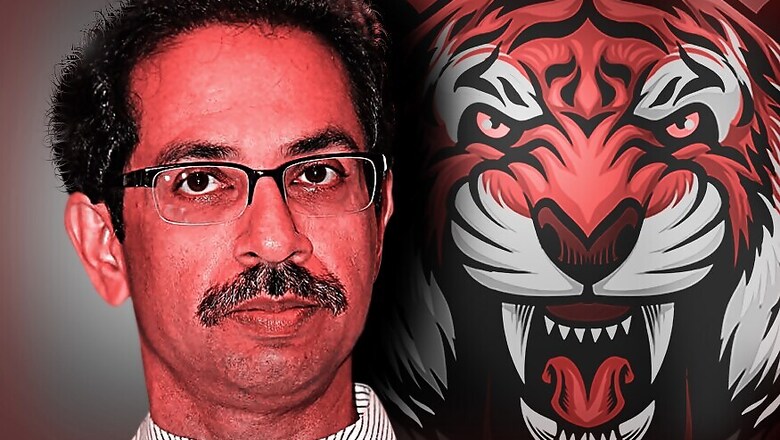
views
Bal Thackeray had the mien of a tiger, the Shiv Sena’s symbol. Nobody ever thought his son Uddhav will even amount to be a tiger cub. His soft features and softer voice added to his nondescript personality.
But all that is going to change. The Marathi Manoos of Mumbai just about managed to see to that.
The Brihan Mumbai Corporation election results are out and the Shiv Sena has romped home. The figure is 84, just two less than the BJP's record tally of 82. Before the results came in, it was thought if the Sena crosses 100 Uddhav will literally be the king of Mumbai and if the figure touches the majority mark of 114, Mumbai will be his.
The thing that irked him most — the comparison with cousin Raj Thackeray of the MNS and the latter’s resemblance with Balasaheb — has finally been put to rest. The MNS, for all practical purposes, is breathing empty political air.
From this pedestal, Uddhav will get the chance to do what he has always wanted to do: Be the kingmaker, be the leader of the regional political force of Maharashtra who can decide the fate of the government and its policies. He can dream big, beyond Mumbai.
He has come a long way, certainly. The man, for the first 40 years of his life, ran away from politics, from the public glare, shying away from his father’s colossal presence. He was content pursuing his avocation – photography. He was happiest organising shows and exhibitions of his work. He was 42, in 2002, when Balasaheb decided enough was enough. He gave him charge of readying the Sena for the BMC polls. The party performed well and quiet image management saw to it that Uddhav got enough credit for the victory. He was sucked into Sena politics, hook, line and sinker when he became the working president in 2003. The next year, in 2004, Balasaheb declared Uddhav as the next party chief. Uddhav was surprised, just as his cousin Raj who always thought the mantle was his.
The Sena has been his since. The ageing tiger spent the later years tutoring and mentoring Uddhav, removing obstacles from his path. Balasaheb held the real reins of the Sena till he died in 2013, but by that time Uddhav was well honed in Sena activities. Eventually, he worked out a truce with Raj and went ahead teaming with the BJP to share power in Maharashtra.
The state is one thing. BMC, the richest civic body in the continent, is another. That was something Uddhav was clear about. His supporters saw a suddenly changed Uddhav. This man was more aggressive, tough talking and even taunting and took on Narendra Modi and the BJP hierarchy as he set about ensuring the Sena retained control over the BMC.
That the voter turnout was nearly eight per cent higher than in 2012 suggests how sharply the NDA allies – BJP and Sena – fought each other in the run-up to the elections.
The stakes for chief minister Fadnavis were high as well. The victory in the BMC throughout Maharashtra has strengthened his position within the BJP and given the party a higher pedestal for the next round of elections. In the event, Fadnavis has the satisfaction of having redeemed himself with his face held high — after all, he came that close — two seats short — to beating the Sena on its own turf.
The BJP's record performance can be attributed to the following reasons: One, the non-Maharashtrian voters more or less consolidated behind the BJP. Two, the "corporate citizens" of Mumbai the Metropolis preferred the BJP. Three, the middle class — actually the upper echelons of this class — turned out to vote, mostly for the first time, and it favoured the BJP. Four, most of these segments of the population would not have been affected by the note ban.
If you examine the Sena's performance, what stands out first is that its attempt to divide the Gujarati vote by bringing in people like Hardik Patel backfired. The upper classes Mumbaikars clarified they do not prefer the Sena to lead them. And yet, the Sena topped its 2012 tally. How? The Maharashtrian voter, specially the one belonging to the working and lower middle classes of the city, rooted for the Sena without exception. Just one segment of the teeming town was behind the Sena. That is how Balasaheb developed the roots of the party and that is how Uddhav chooses to see it. It paid off in 2017, despite the odds.
That in the process the metropolis stands irrevocably divided along class and linguistic lines between two quibbling allies is an issue best left for another day.


















Comments
0 comment